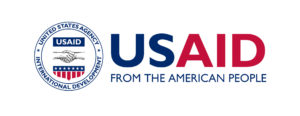 I recently joined the board of a brand new nonprofit. I am helping with the content of its first ever web site. I decided to look at the web sites of some other similar organizations to get some ideas.
I recently joined the board of a brand new nonprofit. I am helping with the content of its first ever web site. I decided to look at the web sites of some other similar organizations to get some ideas.
I found nonprofit associations that have classes on how to prepare an annual report – but they don’t have any of their annual reports posted on their web site. I found foundations that demand copies of the latest 990 from nonprofit applicants, but they don’t have their 990s on Guidestar. I found a nonprofit that has its board of directors listed on its web site, and always has, but has a different board listed on their 990s for those same years on Guidestar.
Why aren’t these organizations walking their talk, doing what they want other organizations to be doing?
And then there is the nonprofit organization that I consider famous, that you have probably heard of. Were I to say its name, which I’m not, and its name would probably bring to mind images of innovation, of bucking the status quo, of direct confrontation, and lots and lots of action. You would think of it as an organization that doesn’t recognize any tradition or rule as absolute. You would think of it as an agency embraces new ideas and experimentation, and works in a flexible, pro-active manner, putting its mission goals before bureaucratic ones. So imagine my astonishment when talking with this organization to receive such a hostile reaction to the idea of employee telecommuting / cloud commuting. The human resources manager sounded as though she couldn’t breathe at the thought of such a radical idea, and once she did find her words, said that this organization’s HR policy absolutely forbids any such practice. When I suggested that it would be a good idea to modernize that policy, another staffer jumped in, reminding me that doing something so “substantial” as changing a policy takes “a lot of time” and “much reflection” and “a great deal of research about legal issues.”
Here’s an organization that prides itself on not playing by the rules, and even sometimes asks its volunteers to violate the law in pursuit of its goals – no kidding! But revise its human resources policies to allow employee telecommuting? Why, that’s crazy talk!
There’s another organization you probably would not have heard of, but you would be familiar with its work: trying to address conditions and practices that lead to global climate change. But while this agency is writing guidelines, holding conferences and lobbying corporations and governments, the overwhelming majority of its staff, even those who live less than half a mile from the organization, are driving to work, despite the outstanding mass transit system available in its city. The organization has no policies regarding recycling its own office waste, and there’s no emphasis on any energy-saving practices within its offices.
Can you imagine if the press, or a group working counter to this organization, identified these practices and detailed them publicly, and the enormous public relations fallout that would occur?
These are real-life examples of organizations promoting practices or an image that isn’t actually reflected in their practices or culture, of organizations not truly “walking their talk.” And there’s more:
- there are organizations that say they have a commitment to fighting for human rights and inclusion that have web sites and online resources (apps, videos, etc.) that aren’t accessible for people with disabilities – and they balk at the idea of making that commitment to digital inclusion
- organizations that encourage corporations to allow their employees to volunteer on company time, while not allowing their own employees to do so.
- organizations that advocate for feminism and women’s rights, but have antiquated dress codes and business practices regarding women that work and volunteer for them.
- companies holding seminars on innovation and efficiency in the workplace who have antiquated computers, software and other devices that inhibit their staff productivity.
- initiatives that tout the importance of local control of local activities, local decision-making, but ignore the feedback of clients, volunteers and frontline staff, even imposing requirements of them with no discussion from them.
Take a look at your organization, particularly your mission statement, and ask yourself, “Is what we promote to others being practiced by ourselves?” Look at the behavior you encourage or talk about in your programs – do you exude that behavior yourself, as an organization? Survey your staff and volunteers, allowing them to anonymously provide feedback on where they see disconnect in the organization’s mission and the organization’s own internal practices.
Not only will you avoid a public relations nightmare, your own practices will become marketing tools for your organization’s mission.

If you have benefited from this blog or other parts of my web site and would like to support the time that went into researching information, developing material, preparing articles, updating pages, etc. (I receive no funding for this work), here is how you can help.
See also:
- Accessibility: a human rights & a digital divide issue too many ignore
- Mission-Based Groups Need Use the Web to Show Accountability
- Lessons from UN Cares re LGBTI inclusion in the workforce
- Organizations that say they need volunteers but turn away applicants
- A missed opportunity in Afghanistan
- Reporting impact should be EASY – why do so many struggle with it?
- Innovation & tech need to work for women and girls too
- 14 (was 13) things you do to annoy me on social media
- What is impressive, what is not.
- Survival Strategies for Nonprofits

 I’ve updated
I’ve updated 
 In honor of Anthony Bourdain, whose loss I still mourn, I read Kitchen Confidential: Adventures in the Culinary Underbelly for the first time. It’s a fantastic read – I highly recommend it. There’s a short section where he lists all of the wrong reasons to start a restaurant and a list of signs that a restaurant is in trouble, followed by a long narrative of his personal experiences at such failing restaurants. It got me thinking about what I’ve always considered the obvious signs of a nonprofit that’s in trouble and the wrong reasons to start a nonprofit, based on my what I’ve seen and experienced.
In honor of Anthony Bourdain, whose loss I still mourn, I read Kitchen Confidential: Adventures in the Culinary Underbelly for the first time. It’s a fantastic read – I highly recommend it. There’s a short section where he lists all of the wrong reasons to start a restaurant and a list of signs that a restaurant is in trouble, followed by a long narrative of his personal experiences at such failing restaurants. It got me thinking about what I’ve always considered the obvious signs of a nonprofit that’s in trouble and the wrong reasons to start a nonprofit, based on my what I’ve seen and experienced. The next time you see a glowing article about or an interview with a woman who has started her own initiative or nonprofit in the town or neighborhood where she lives, or who is running for office, or who is leading a fight against some polluter or oppressor in her area, no matter what country it’s happening in, consider what this woman is probably dealing with that isn’t talked about in the article: vicious, constant personal attacks and criticisms.
The next time you see a glowing article about or an interview with a woman who has started her own initiative or nonprofit in the town or neighborhood where she lives, or who is running for office, or who is leading a fight against some polluter or oppressor in her area, no matter what country it’s happening in, consider what this woman is probably dealing with that isn’t talked about in the article: vicious, constant personal attacks and criticisms. But some people didn’t like her success. A small minority of participants provided constant public and private criticism of how she moderated and facilitated activities and how she reinforced the goals of the project, and rarely was the criticism constructive. People who violated the project’s policies – policies that are in writing and about which regular reminders are sent – were angry when they were gently reprimanded, even if that reprimand happened well behind the scenes, discreetly. They were furious when their actions, in violation of the written policies, lead them to being blocked from further participation. The founder received personal insults via direct message and text, like the one posted next to this paragraph (it’s one of the milder ones, actually). At least one person created a fake account on Facebook and posted outrageous messages, trying to make people think it was the group founder. At least three rival projects were launched by disgruntled former participants – all failed after just a few weeks or months. But that tiny, vocal, persistent minority and their constant insults and attacks finally did her in: after four years, she resigned her role as project owner and manager, not because she thought the project needed fresh leadership, not because there were people who had demonstrated that they were ready to take over, but because, emotionally, she just couldn’t take the belittling and abusive comments anymore. It will now be up to the remaining volunteers to keep the project going. And maybe the project will continue. But what I’m worried about is that she’s probably going to continue to be targeted for comments by people in any endeavor she undertakes in this small town because she DARED to lead.
But some people didn’t like her success. A small minority of participants provided constant public and private criticism of how she moderated and facilitated activities and how she reinforced the goals of the project, and rarely was the criticism constructive. People who violated the project’s policies – policies that are in writing and about which regular reminders are sent – were angry when they were gently reprimanded, even if that reprimand happened well behind the scenes, discreetly. They were furious when their actions, in violation of the written policies, lead them to being blocked from further participation. The founder received personal insults via direct message and text, like the one posted next to this paragraph (it’s one of the milder ones, actually). At least one person created a fake account on Facebook and posted outrageous messages, trying to make people think it was the group founder. At least three rival projects were launched by disgruntled former participants – all failed after just a few weeks or months. But that tiny, vocal, persistent minority and their constant insults and attacks finally did her in: after four years, she resigned her role as project owner and manager, not because she thought the project needed fresh leadership, not because there were people who had demonstrated that they were ready to take over, but because, emotionally, she just couldn’t take the belittling and abusive comments anymore. It will now be up to the remaining volunteers to keep the project going. And maybe the project will continue. But what I’m worried about is that she’s probably going to continue to be targeted for comments by people in any endeavor she undertakes in this small town because she DARED to lead. I think the work of the
I think the work of the 
